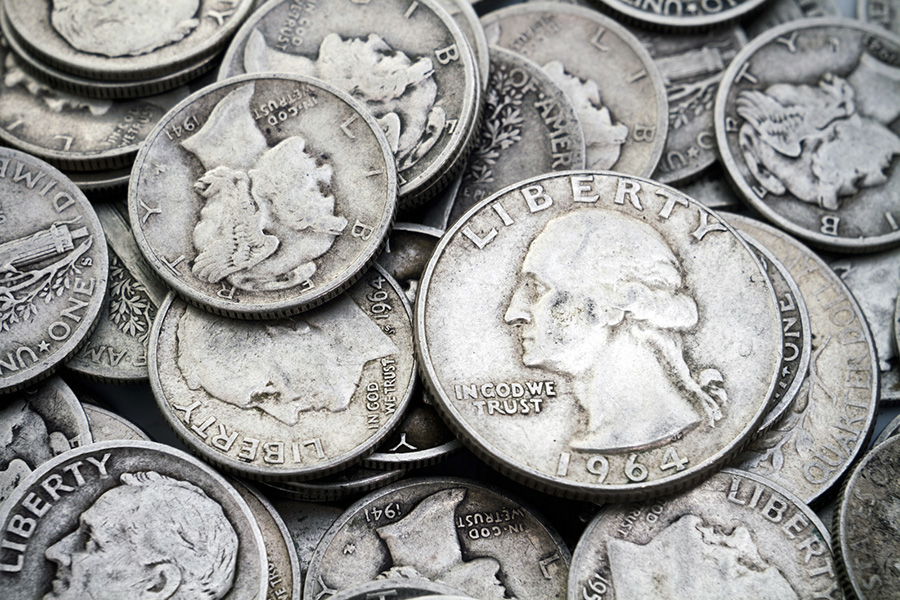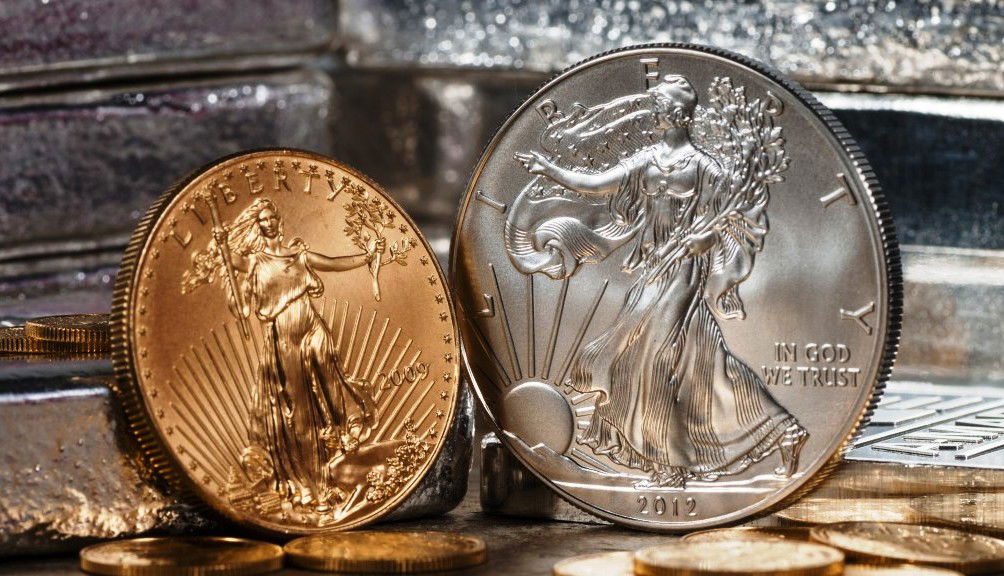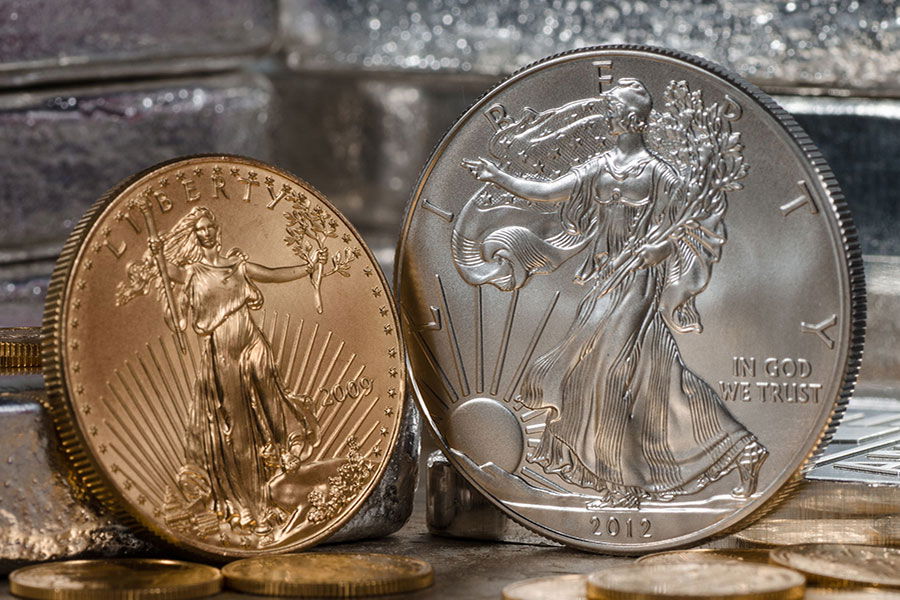If you’re interested in precious metals, you may have heard the term “junk silver” thrown around before. While the name may sound unappealing, junk silver can actually be a valuable addition to your investment portfolio. But what exactly is it?

In short, junk silver refers to circulated coins that contain a percentage of silver but are not considered rare or collectible. These coins can come in various denominations and were typically used as currency in the past.
So, why should you consider investing in junk silver? Let’s dive into the details.
Definition of Junk Silver
The term junk silver refers to pre-1965 US coins that contain 90% silver. These coins are also known as scrap silver, and are typically composed of dimes, quarters, or half dollars. The coins can be found in circulation, or purchased from dealers and collectors for their metal content.
The value of junk silver coins is based on the amount of silver found in them. They can be sold for their melt value, which is the price of the metal content less any additional costs associated with buying or selling them. Junk silver coins can also be kept as collectibles, with some being more valuable than others due to rarity or condition.
History of Junk Silver
Prior to 1965, most coins minted in the United States were composed of a combination of 90% silver and 10% copper. This blend produced coins that were both durable and visually appealing. Silver was selected as the ideal material for coins due to its affordability.
Although pennies and nickels were never minted with 90% silver (though some nickels contained 35% silver for a brief period), every other denomination of US coinage at some point consisted of 90% silver. This included dimes, quarters, half dollars, and dollars, each with its own unique design.
In 1965, Public Law 88-36 was passed, mandating a reduction of silver content in coins, cutting the proportion from 90% to 40%. In 1970, most coins ceased to contain any silver at all.
Due to rising silver costs, production of silver coins had become impractical. Junk silver is now a popular choice for collectors and investors seeking silver bullion at a lower cost compared to modern silver coins. The history of junk silver reflects the evolution of US coinage and serves as a reminder of a time when silver played a prominent role in US currency.
Types of Junk Silver
Below is a list of all U.S. coins that are 90% silver and 40% silver, along with the years they were minted.
| Coin | Years Minted | Metal Percentages |
| Barber Dime | 1892-1916 | 90% silver; 10% copper |
| Mercury Dime | 1916-1945 | 90% silver; 10% copper |
| Roosevelt Dime | 1946-1964 | 90% silver; 10% copper |
| Barber Quarter | 1892-1916 | 90% silver; 10% copper |
| Standing Liberty Quarter | 1916-1930 | 90% silver; 10% copper |
| Washington Quarter | 1932-1964 | 90% silver; 10% copper |
| Barber Half Dollar | 1892-1915 | 90% silver; 10% copper |
| Walking Liberty Half Dollar | 1916-1947 | 90% silver; 10% copper |
| Franklin Half Dollar | 1948-1963 | 90% silver; 10% copper |
| Kennedy Half Dollar | 1964 | 90% silver; 10% copper |
| Kennedy Half Dollar | 1965-1970 | 40% silver; 60% copper |
| Trade Dollar | 1873-1885 | 90% silver; 10% copper |
| Morgan Dollar | 1878-1921 | 90% silver; 10% copper |
| Peace Dollar | 1921-1935 | 90% silver; 10% copper |
| Eisenhower Silver Dollar | 1971-1978 | 40% silver; 60% copper |
Why Buy 90% and 40% Silver Coins?
Investors, collectors, silver stackers, and preppers all find value in purchasing 90% and 40% silver coins.
Investors and collectors typically buy 90% and 40% silver coins for their historical significance and silver content, which provide a valuable investment and diversify portfolios.
These coins are typically purchased in bulk by silver stackers who are looking to accumulate physical silver without paying high premiums. While junk silver coins may not be as aesthetically pleasing as modern bullion coins, they are still valued for their silver content and can be easily traded or sold in times of economic uncertainty.
Junk silver is also popular among preppers who prepare for catastrophic events. In such scenarios, preppers view paper currency as untrustworthy and instead prefer holding actual silver coins, which come in small denominations and always hold value. In times of crisis, junk silver can serve as a means of barter.
What’s the difference between junk silver and silver bullion coins?
Junk silver coins were previously used as legal tender in the United States, while silver bullion coins are newly minted coins produced by government mints worldwide.
A major difference between the two is their silver purity, with junk silver coins having a lower silver content ranging from 35% to 90%, and silver bullion coins are 99.9% pure silver or higher.
A few examples of silver bullion coins include the American Silver Eagle, the Canadian Silver Maple Leaf, the Austrian Silver Philharmonic, and the Australian Silver Kangaroo.
In terms of value, junk silver coins are usually valued based on their silver content, while silver bullion coins may have additional value based on factors such as their rarity, design, and condition. Junk silver coins also typically have lower premiums.
Benefits of Investing in Junk Silver
Investing in junk silver can offer several benefits:
- Low premiums: Junk silver coins can be purchased at a relatively low premium over the spot price of silver. This makes it an affordable option for many investors to acquire a significant amount of physical silver without paying high premiums.
- Recognized value: Junk silver coins are widely recognized and accepted as a form of currency. During economic uncertainty or crisis, they can be easily traded or sold, providing investors with a sense of security and flexibility in their investments.
- Portability: Junk silver coins are small and lightweight, making them easy to store and transport. This convenience appeals to investors who prefer physical assets that can be easily moved or transported.
- Diversification: Investing in junk silver can help diversify an investment portfolio. By including junk silver alongside other assets, investors can create a more balanced portfolio suited to their investment goals. This can potentially reduce overall risk and increase returns.
- Inflation hedge: Junk silver can serve as a hedge against inflation. Historically, silver has been used as a hedge against inflation, and junk silver can help protect an investor’s purchasing power, a key benefit many investors seek.
- Collectibility: For some investors, collecting junk silver coins can provide an additional layer of enjoyment and satisfaction to the investment. The historical and aesthetic value of these coins makes it a unique and personally fulfilling option.
What to Consider When Buying Junk Silver
Before purchasing junk silver, make sure you understand the current market value of silver. The price of silver can be volatile, so keep an eye on the spot price of silver so you can buy when the price is low. Doing so can be beneficial for maximizing your investment and potentially making a profit when the price of silver goes up.
Aside from the price, the condition of the coins also plays a key role when buying junk silver. Typically, junk silver coins are sold in “bags” containing a random assortment of coins, and the condition of the coins can vary significantly.
Some coins may be heavily worn or damaged, while others may be in excellent condition. If you intend to buy junk silver for investment purposes, be sure to choose coins that are in good condition. Such coins will have a higher value and will be easier to sell in the future.
Lastly, when purchasing junk silver, it’s essential to choose a reputable dealer. Be sure to select a dealer with a proven track record of selling high-quality junk silver coins, and who provides a guarantee of authenticity. Reading customer reviews can also help you identify trustworthy dealers.
Where to Buy Junk Silver
When it comes to purchasing junk silver, there are multiple options available to you. Here are some of the most common places where you can buy these coins:
- Local coin shops: To begin with, you can start your search by visiting your local coin shop. These shops typically carry a diverse range of junk silver coins, and by inspecting the coins in person, you can gain a better understanding of their condition before making a purchase. Additionally, local coin shops can offer valuable advice and guidance on buying and selling coins.
- Online dealers: Another option is to buy junk silver coins from online dealers. There are numerous reputable online dealers who specialize in selling precious metals, including junk silver coins. Shopping online can provide a more extensive selection of coins, and often, lower prices compared to local coin shops.
- Auctions: Junk silver coins may also be available at auctions. Participating in auctions can be an exciting way to find rare or unusual coins, and junk silver coins may be sold individually or as part of a collection. Before bidding, it’s important to research the auction house and the coins you’re interested in.
- Estate sales: Estate sales can be a good source for buying junk silver coins. At estate sales, you might come across a collection of coins that includes some valuable pieces. Keep in mind that estate sales can be competitive, so if you spot coins you’re interested in, you should be prepared to act quickly.
- eBay: eBay is also a popular marketplace for buying and selling junk silver coins. However, be sure to exercise caution when buying from eBay sellers and to carefully review their ratings and feedback.
Where to Sell Junk Silver
You can sell junk silver coins at some of the same places that you bought them, such as local coin shops, online dealers, and online marketplaces like eBay. Research each option thoroughly and choose the one that offers the best combination of convenience, profitability, and security.
Bottom Line
Junk silver coins provide a great opportunity to diversify your investment portfolio and protect your wealth. As a tangible asset, they can serve as a hedge against inflation and other economic downturns. To make informed decisions about purchasing, storing, and liquidating junk silver coins, it is essential to have the right information.
When buying junk silver coins, consider certain factors, including premiums, the type of coin, and the amount you can afford to invest. Furthermore, it is vital to research the proper storage methods to ensure the coins’ long-term value. Lastly, it’s important to know where to find potential buyers willing to pay a fair price when it is time to sell your holdings.



